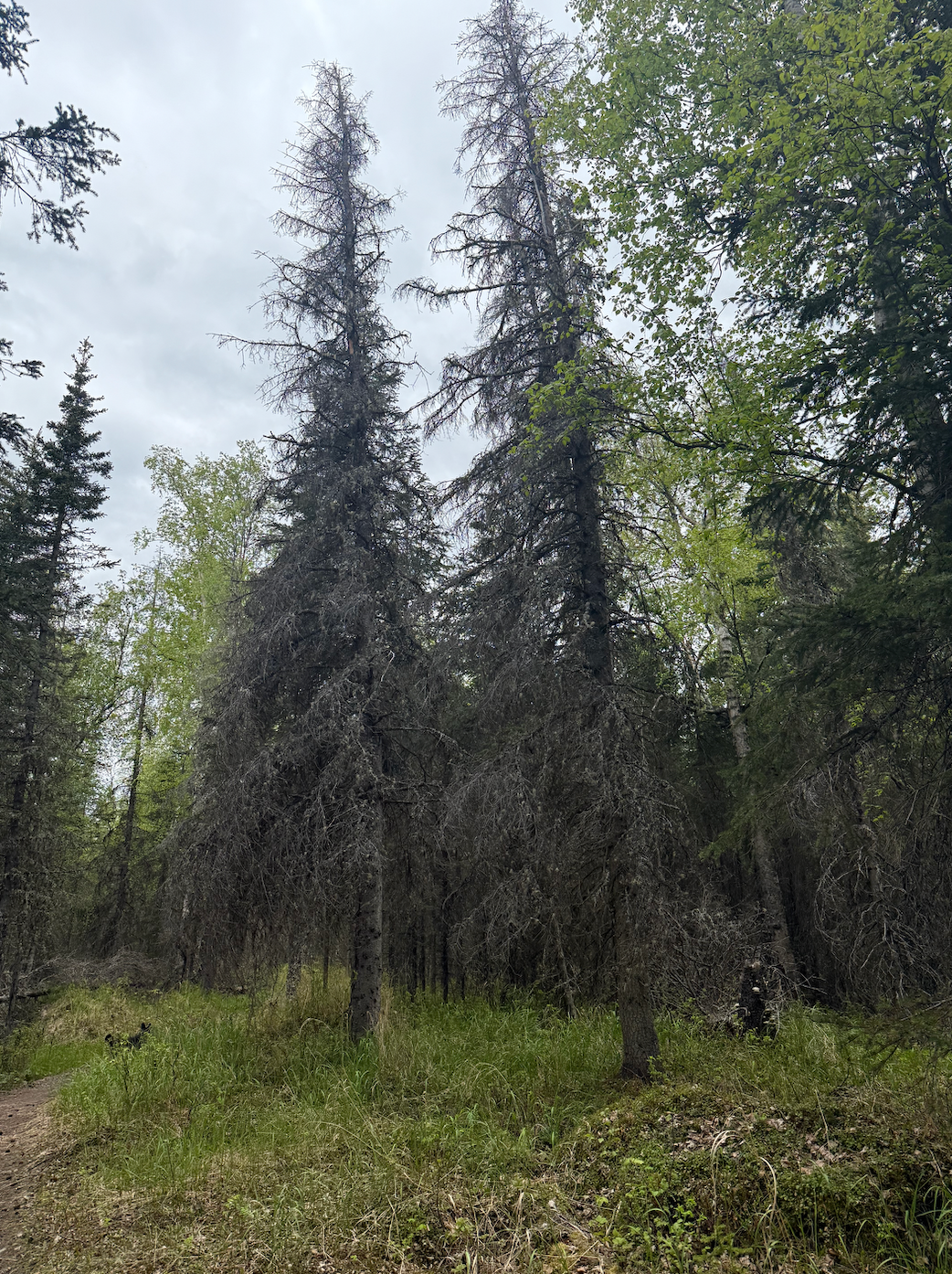Fear and Joy
I confess I harbored a perverse hope that I would hear that the trees are afraid. It’s a bit like doom-scrolling—sometimes it feels good to have our fear reflected in the world around us.

Each week, I provide a gentle turning practice to help us shift our perspective. You may find it helpful to have a journal at hand, but it’s not required. I hope these practices of body and heart bring you peace and connection in the middle of whatever storm is blowing around you at the moment. Today's newsletter is the first in a series dedicated to loving the land you're with.
The last few weeks, I’ve been asking myself, “What does it mean to love the land I’m with?” Land is a big word for me, encompassing the earth, the waters, the plants and animals, and the people. It’s nebulous and heartfelt, but also very specific to each person, like the word “home.” For me, it means developing relationships with the non-human beings around me similarly to my human relationships. I am learning to watch and listen. I am beginning to learn from the beings in the world around me, about what it is to be alive and in close community with all of the beings in my home, not just the human beings.
We’ve talked about speaking with plants in the past. This week, I felt called to speak to the trees. More specifically, the trees dying from spruce beetle infestation. There are a lot. It has been awhile since I spoke to trees. I am still reeling from the loss of tree friends near my old house. I miss that communion, though, so I sent out tentative thought queries to dying tree friends as I passed on my walks and drives this week: “How are you? What can I do?”
I am afraid of what is happening in our environment. Seeing thousands of trees succumbing to a global-warming-fueled infestation is terrifying. Often, it feels like I have connected more deeply with the natural world only to bear witness to its crumbling. I confess I harbored a perverse hope that I would hear that the trees are afraid. It’s a bit like doom-scrolling—sometimes it feels good to have our fear reflected in the world around us. It’s easy to do in the human world. Fear is everywhere. It manifests as insecurity, uncertainty, paralysis. It’s so pervasive, it feels like just part of our nature. Fear is often playing in the lower notes of the cords of our souls’ songs.
Not so with non-human beings. When they speak, the tune is different. Unless there is an immediate threat, there are no fear undertones. And they are always telling me, without admonition, “Do not be afraid.” So, when I asked the dying trees how they are doing, I expected to hear about fear, but I was not surprised when I did not. Their response? “This life is a gift. We are privileged to have been a part of it.” Joy in living even as they are dying. Absolutely no fear.
This is inspiring and intimidating. I aspire to that fearless embrace of pure joy in existence and connection, in satisfaction with life in whatever shape it takes for me. That aspiration is the work of a lifetime. While I may never achieve the enlightenment of trees, I know that each breath of communion I have with them is one breath closer to the joy of my life. The trees aren’t just the teachers, the communion isn’t just the lesson. They are they experience of life and joy themselves.
My suggestion to you this week is to check in with a non-human being in a difficult situation. Ask questions: “How are you? What can I do?” Or reach out and touch the being and simply feel. Experience the joy of connection.
I call myself an “everyday mystic” because I’ve found that our dominant, human-centered culture is so pervasive, it can take the perspective of a mystic to pierce it. I looked for meaning around me using a spiritual perspective, and I found deeper connection in a hidden world that is more natural than it is supernatural. The purpose so many of us long for is all around us if we choose to look for it. All it takes is a willingness to step outside of the default American perspective, one moment at a time.
Are you enjoying what you're reading? Please share with your friends! And remember: this is a reader supported publication. All content is free, but a paid subscription helps keep the lights on. Consider supporting content you love!
(Please note that I am not a non-profit organization. These gifts are not tax-deductible.)
